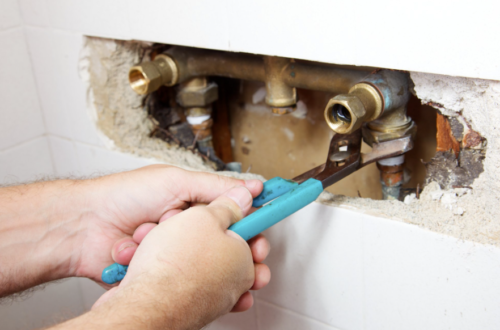A Step-by-Step Guide to DIY Faucet Repair: Fixing Leaks and Drips
Introduction
Leaky faucets are not only annoying but can also lead to unnecessary water wastage and increased water bills. Fortunately, fixing leaks and drips in your faucet can be a relatively easy DIY task, saving you time and money. In this comprehensive guide, we will walk you through the step-by-step process of repairing your faucet, ensuring you have all the necessary information to tackle this common household problem.
Step 1: Gather the Tools and Materials
Before you begin the repair process, it’s important to gather all the necessary tools and materials. Here’s a list of items you’ll need:
- Adjustable wrench
- Screwdriver (both flathead and Phillips)
- Replacement parts (such as washers, O-rings, or cartridges)
- Plumber’s tape
- Bucket or towel
Step 2: Turn Off the Water Supply
Prior to any repairs, it is crucial to turn off the water supply to the faucet. Look for the shut-off valves located under the sink or, in some cases, near the main water supply valve. Turning off the water supply will prevent any accidental leaks or water damage during the repair process.
Step 3: Disassemble the Faucet
Using the appropriate screwdriver, carefully remove the decorative cap on the faucet handle. This will expose the screw that holds the handle in place. Unscrew the handle and remove it, revealing the cartridge or stem assembly.
Next, use an adjustable wrench to loosen and remove the packing nut or retaining nut that holds the cartridge or stem assembly in place. Once removed, you can access the internal components of the faucet.
Step 4: Inspect and Replace Faulty Parts
Now that you have access to the internal components, it’s time to inspect and identify the faulty parts causing the leaks or drips. Common culprits include worn-out washers, O-rings, or cartridges.
Carefully examine each component for signs of wear, tear, or damage. If you notice any issues, it’s best to replace the faulty parts with new ones. Refer to the manufacturer’s instructions or consult a plumbing professional if you are unsure about the correct replacement parts for your specific faucet model.
Step 5: Reassemble and Test
Once you have replaced the faulty parts, carefully reassemble the faucet in the reverse order of disassembly. Make sure to tighten all the nuts and screws securely, but be cautious not to overtighten as it may cause damage.
After reassembling, turn on the water supply and test the faucet for any leaks or drips. If you notice any issues, double-check the connections and tighten or adjust as needed. In most cases, this should resolve the problem and your faucet should now be leak-free.
FAQs (Frequently Asked Questions)
Q: How do I know if my faucet needs repair?
A: If you notice any leaks, drips, or a constant running water sound, it’s a clear sign that your faucet needs repair.
Q: Can I use any replacement parts for my faucet?
A: It is recommended to use the specific replacement parts recommended by the manufacturer for your faucet model. Using incompatible parts may lead to further damage or ineffective repairs.
Q: Can I repair a faucet without turning off the water supply?
A: No, it is essential to turn off the water supply before attempting any faucet repairs to avoid water damage or accidents.
Q: How long does a DIY faucet repair usually take?
A: The duration of a DIY faucet repair depends on the complexity of the issue and your level of experience. In general, simple repairs can be completed within 30 minutes to an hour.
Q: When should I consider calling a professional plumber?
A: If you are unsure about the repair process, lack the necessary tools, or if the issue persists even after attempting DIY repairs, it is advisable to seek the assistance of a professional plumber.
For more detailed information on faucet repair, you can check out this informative article that dives deeper into the topic.






